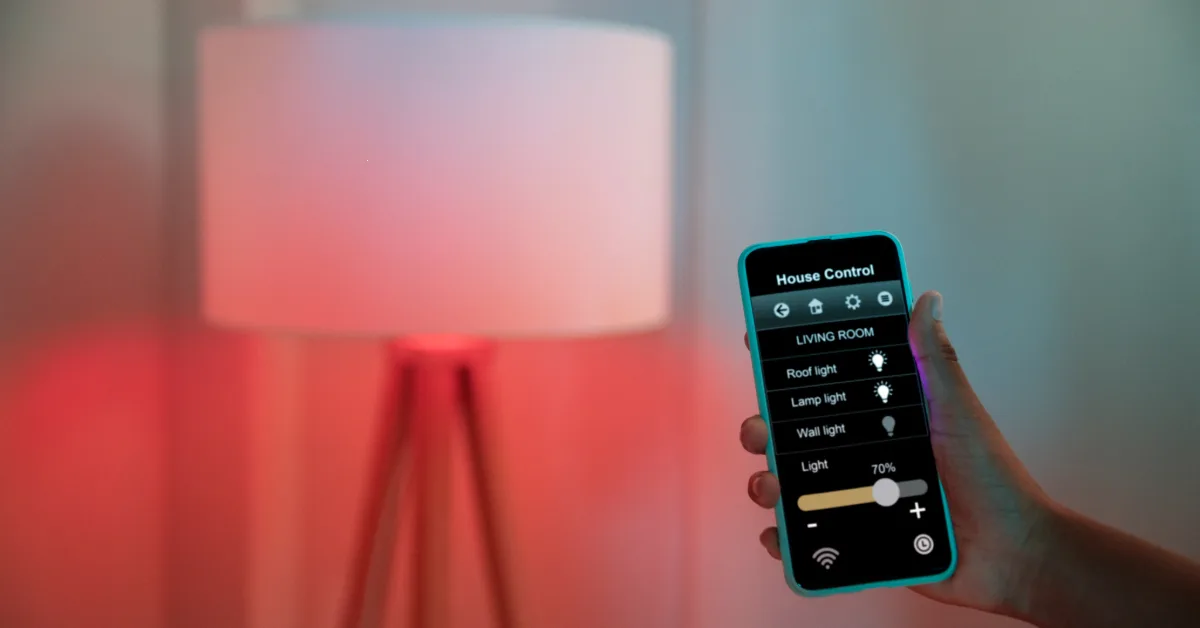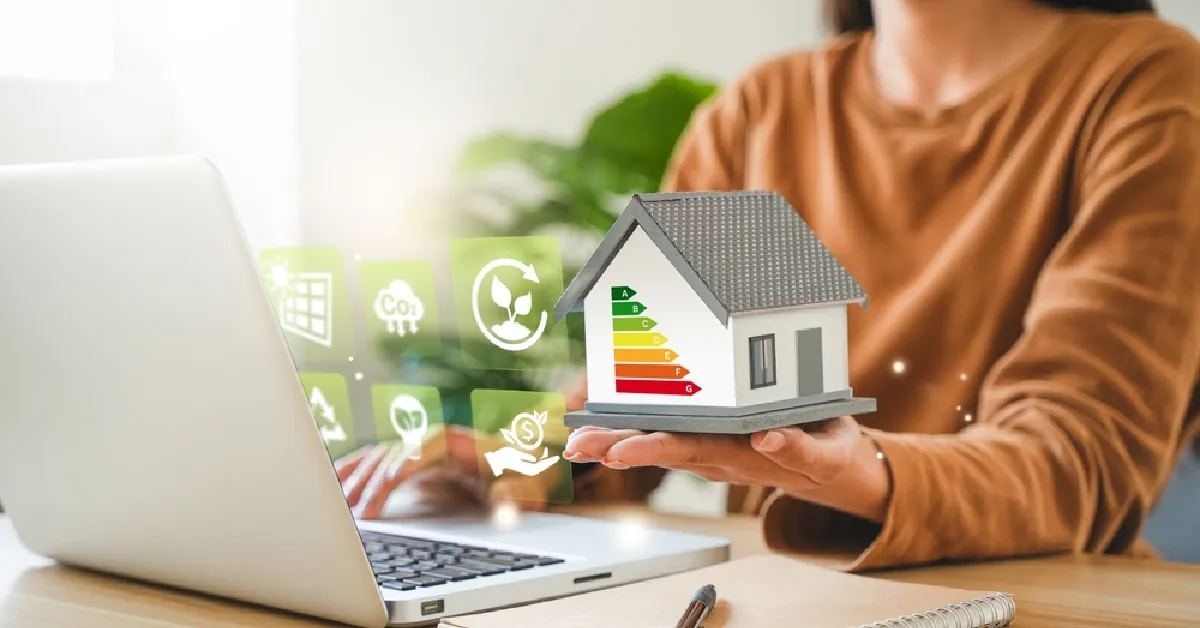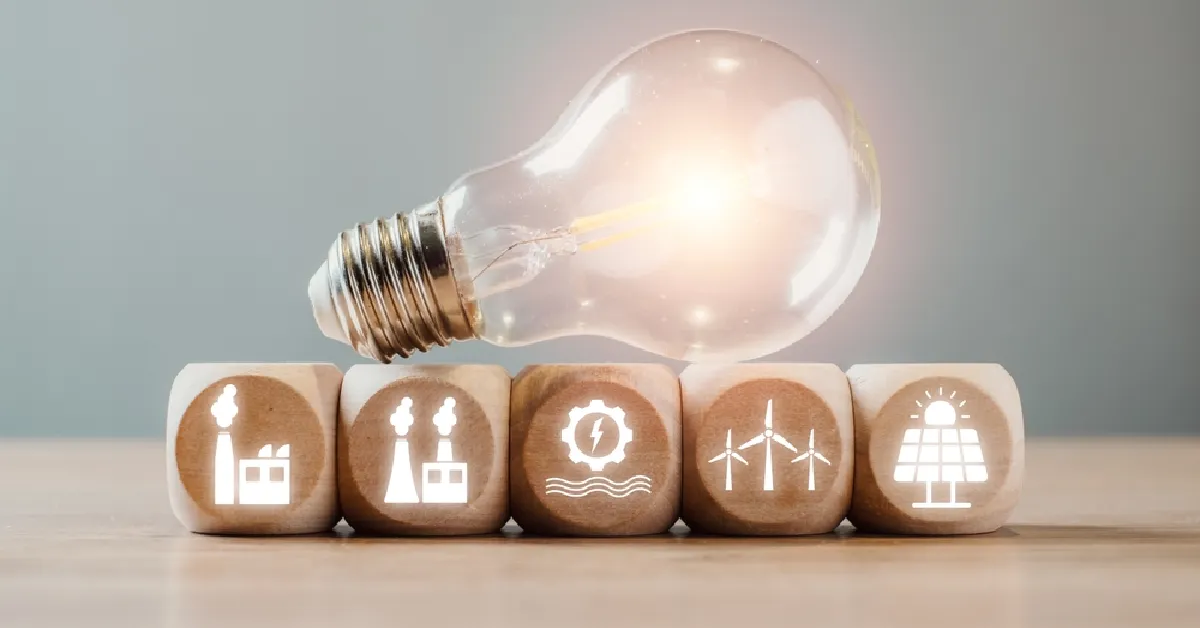Energy efficient lighting solutions in the UAE are a vital part of modern home maintenance because they bring both financial and environmental benefits. While lighting once accounted for around 15% of household electricity use, this figure has continued to decline due to the widespread adoption of LEDs and other efficient technologies.
- Importance of energy-saving lighting in homes
- Why switch to energy efficient lighting
- Types of energy efficient lighting solutions
- Lighting controls and enhancements
- Room-by-room energy-efficient lighting
- Optimising lighting for energy efficiency
- Costs, rebates, and savings potential
- Key takeaways
- FAQs
Importance of energy-saving lighting in homes

Energy-efficient lighting enhances comfort, cuts electricity costs, and reduces environmental impact.
- Financial benefits – LEDs use up to 80 % less energy than incandescent bulbs and last far longer, offsetting the higher upfront cost.
- Environmental impact – Lower energy use results in a smaller carbon footprint and fewer harmful materials, such as mercury.
- Low maintenance – LEDs last up to 25 times longer than traditional bulbs, reducing replacements and waste.
- Performance & flexibility – Modern lighting offers adjustable brightness and colour, with smart options that allow remote control and automation.
Key statistics
According to the International Energy Agency (IEA), lighting once made up around 10–15 % of residential electricity use, but this share is steadily declining as households adopt LED and smart lighting technologies worldwide, including across the UAE.
Why switch to energy efficient lighting?
Switching to energy-efficient lighting, especially LEDs, remains one of the smartest home upgrades in 2025. LEDs offer major cost savings, a dramatically longer lifespan, and a smaller carbon footprint – all while providing better light quality and flexibility.
Reduced electricity consumption and cost savings
LEDs use up to 80% less energy than traditional incandescent bulbs while producing the same brightness. This translates into an average household saving of around $225 (≈ AED 825) per year on electricity bills. Even though LED bulbs cost more upfront, the quick payback period – thanks to lower energy use and fewer replacements – makes them a fast and worthwhile investment.
Longer bulb lifespan
LEDs last between 25,000 and 50,000 hours, compared to only about 1,200 hours for incandescent bulbs. This means far fewer replacements, less maintenance, and less waste over time, especially useful for hard-to-reach light fixtures.
Lower carbon footprint
Using LEDs helps cut greenhouse gas emissions by reducing electricity demand and dependence on fossil fuels. LEDs also contain no mercury or toxic substances, making them safer to dispose of. Because they emit very little heat, they can even help reduce cooling costs in warmer climates.
Overall, switching to LEDs offers the best balance between cost, performance, and sustainability.
Types of energy efficient lighting solutions

Nowadays, homeowners have access to several effective energy-saving lighting options. From LEDs and CFLs to advanced smart lighting systems, each offers distinct advantages depending on the setting, usage, and energy goals.
LED bulbs (Light Emitting Diodes)
LEDs are the most widely used and efficient lighting option available today, offering superior performance, energy savings, and longevity.
| Feature | Details |
| Energy savings | Use 75–90% less energy than incandescent bulbs |
| Lifespan | Last 10–25 times longer (approximately 25,000–50,000 hours) |
| Ideal for | General, recessed, outdoor, and decorative lighting |
| Best choice | Choose ENERGY STAR-rated or UAE-approved LEDs for verified efficiency and quality |
Dimmable LEDs now work seamlessly with most modern switches and home systems, allowing better control of brightness and overall energy use.
CFL bulbs (Compact Fluorescent Lamps)
CFLs were once the leading energy-efficient choice and remain suitable for specific applications.
- Use about 70% less energy than incandescent bulbs
- Ideal for spaces with long lighting hours, such as kitchens and home offices
- Require proper disposal because they contain small amounts of mercury
- Average lifespan: 8,000–10,000 hours
Although CFLs are still available, they are gradually being replaced by LEDs, which provide higher efficiency and safer operation.
Smart bulbs and lighting systems
Smart lighting combines energy efficiency with modern technology for greater control and convenience.
- Controlled through mobile apps, voice assistants, or smart home hubs
- Offer customisable brightness and colour to suit different needs
- Support automation features such as timers, schedules, and motion sensors
- Automatically dim or switch off when rooms are unoccupied to save energy
Smart lighting is usually LED-based and works best when paired with dimmers, sensors, and schedules, providing convenience without wasting energy.
Lighting controls and enhancements

Modern lighting systems are about more than just light – they’re about control and efficiency. The right controls help ensure lights are on only when needed, saving energy and money without sacrificing comfort.
Timers and motion sensors
Motion and occupancy sensors automatically turn off lights when a space is unoccupied – studies show savings from 10 % to as much as 90 %, depending on usage.
Timers let you schedule lights to switch on or off at specific times, which is especially useful for hallways, outdoor lights, garages, or rarely used rooms.
Combined with LEDs, motion sensors, and timers can reduce lighting energy use by around 30 %–50 % in typical settings.
Dimmers
Dimmers allow you to adjust brightness levels based on the activity or mood of a space – reducing power draw when full brightness isn’t required.
They work well in living rooms, bedrooms, and entertainment areas, where lighting needs vary and full output isn’t always necessary.
Smart lighting systems
Smart lighting enhances LED efficiency through intelligent controls, such as motion sensors, timers, and app-based or voice activation.
These systems optimise energy use by dimming or switching off lights when not needed and can cut lighting consumption by 35–70 % when properly configured.
Choosing the right mix of smart controls helps maximise efficiency, reduce waste, and maintain comfortable lighting across your home.
Room-by-Room Energy-Efficient Lighting Recommendations
| Room | Recommended Solution | Key Features (UAE-specific) |
| Kitchen | LED tubes and recessed downlights (≥100 lumens/W) | High brightness and glare-free task lighting. Choose products with the UAE ESMA label and CRI > 80 for accurate colour rendering. |
| Living Room | Dimmable LED bulbs and smart lighting systems | Adjustable brightness and colour temperature (2700 K–4000 K). Compatible with DEWA Smart Living and home automation. |
| Bedroom | Warm-white LED lamps (below 3000 K) and smart bulbs | Promotes relaxation and circadian comfort. Motion sensors help reduce standby power. |
| Bathroom | Moisture-resistant IP44+ LED fixtures and LED mirror strips | Safe for humid areas per Dubai Municipality standards. Use daylight sensors to save energy. |
| Outdoor / Garden | Solar or motion-sensor LED floodlights (IP65+) | Weather-resistant, automatic on/off. Meets Estidama and Barjeel green-building standards.. |
Optimising lighting for energy efficiency
Getting the most from efficient lighting isn’t just about using better bulbs – it’s about how you design, control, and maintain your lighting system. Here are some UAE-specific guidelines (2025) plus key factors for selecting bulbs and fixtures.
Use natural light, task lighting & good maintenance
Maximise daylight – use wide windows, light-coloured décor, and reflective surfaces so you rely less on artificial lighting during daytime. Local studies in the UAE show that well-designed glazing can significantly cut lighting energy.
Focus task lighting – direct illumination to where it’s needed, such as kitchen counters, reading nooks, or workstations, rather than lighting entire rooms at full intensity. This reduces waste in frequently used UAE home areas like open-plan kitchens.
Maintain fixtures – clean lighting fittings regularly (dust and grease reduce output noticeably in Gulf climates), and replace ageing or faulty lamps promptly to keep efficiency high.
Choose weather- and dust-resistant fixtures for outdoor and terrace use in the UAE, where harsh sun, heat, and sand can degrade lighting performance.
Choosing the right bulbs and fixtures – key factors
Colour temperature: Warm whites (~2700 K) create a cosy ambience in living rooms and bedrooms, while cooler tones (3500–4000 K +) suit kitchens and study areas. UAE-specific guidance recommends choosing colour temperatures suited to both function and cultural comfort.
Lumens, not watts: Focus on brightness (lumens) rather than just wattage. UAE lighting standards emphasise luminous efficacy – lumens per watt – as the key efficiency measure.
Controls compatibility: Ensure LEDs and fixtures are compatible with dimmers, motion sensors, and smart systems. In the UAE market, lighting products must meet the Emirates Conformity Assessment Scheme (ECAS) and display the correct energy-efficiency label.
Energy-efficiency labelling: The UAE’s Cabinet Resolution (2022) requires all lighting products to carry an official energy-efficiency label and documentation. Consumers should look for ECAS or EQM marks, which confirm compliance with national standards.
By applying these strategies – designing with daylight in mind, focusing light where it’s needed, choosing high-efficacy LEDs, and verifying compliance with UAE standards – your home’s lighting will be more efficient, comfortable, and future-ready
Costs, rebates, and savings potential
Switching to energy efficient lighting solutions may have a slightly higher upfront cost, but it pays off quickly through lower energy bills and reduced maintenance. In the UAE, homes that fully convert to LEDs can save thousands of dirhams annually on electricity and bulb replacements.
Initial cost vs. long-term savings
LEDs consume far less electricity and last significantly longer than halogen or incandescent lamps. Most households recover their initial investment within the first year through lower utility bills and fewer bulb replacements. In the UAE, LED payback periods typically range from six to twelve months, depending on household usage patterns and the type of bulbs replaced.
Government incentives and rebates
The UAE government supports efficient lighting through its energy-labelling and standards programmes under ECAS and EQM. Some emirates periodically offer rebates or bulk-purchase incentives for certified products, so residents should check with local utilities such as DEWA or ADDC for current initiatives.
Products carrying higher ECAS star ratings – generally three to five stars – are prioritised in national green procurement initiatives and recognised under sustainability award programmes.
Environmental impact and sustainability
Energy-efficient lighting helps reduce national energy demand and lowers carbon emissions. LEDs also generate less heat and waste, contributing to a smaller environmental footprint and supporting the UAE’s Net Zero 2050 strategy.
Key takeaways
Switching to energy efficient lighting solutions can reduce your home’s lighting energy use by up to 90%. LEDs offer the best combination of brightness, durability, and cost savings, using a fraction of the energy of incandescent bulbs while lasting up to 25 times longer. Pairing LEDs with smart systems, dimmers, and motion sensors helps maximise efficiency and control, while choosing the right colour temperature and fixture for each room enhances comfort. Regular maintenance, smart automation, and compliance with the UAE’s ECAS and EQM standards ensure both savings and sustainability for years to come.
FAQs
LED bulbs remain the most efficient option in 2025, using up to 90% less electricity than incandescents and lasting decades under normal household use.
Yes. Smart lighting offers control and automation, enabling you to schedule, dim, or switch off lights remotely, which helps reduce energy use by up to 70% when configured properly.
Choose brightness by lumens (not watts) and colour temperature by function — around 2700 K for bedrooms and 3500–4000 K for kitchens or workspaces.
Use LED bulbs throughout, add motion sensors and dimmers, and utilise natural daylight wherever possible. Regularly clean fixtures to maintain light output and efficiency.
Yes. Most modern LEDs fit standard sockets, but it’s important to confirm compatibility with dimmers, enclosed fittings, and smart systems before installation.